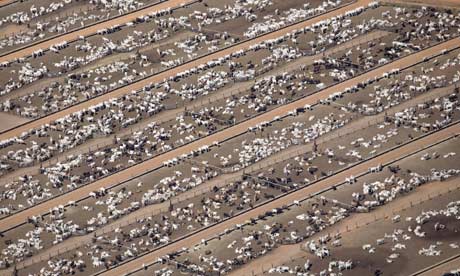[Thăng thiên - 1]
KẾT THÚC CỦA MỘT THỜI KỲ VÀ BẮT ĐẦU CỦA MỘT CHU KỲ MỚI: BƯỚC VÀO THẾ GIỚI MỚI 5D
Tâm thức của bạn là mật khẩu để bước vào thế giới 5 chiều. Đó sẽ là thời điểm khi ý thức của bạn nói, làm! Hoặc, thất bại! Trong khoảnh khắc đó bạn sẽ chỉ có một mình! Sẽ không có ai phán xét hoặc thưởng cho bạn. Nhưng bạn sẽ cảm nhận được nó khi nó xảy ra. Nó là cuối một thời kỳ! Và sẽ là khởi đầu của một kỷ nguyên mới.
Thế giới 3 chiều là của sự cạnh tranh, sự chỉ trích phá hủy, sự ích kỷ hơn hết, là lòng tham. Kiểm soát và quyền lực là mục tiêu duy nhất. Đâm sau lưng, nói dối, gian dối, ác ý và sự tuyên bố của niềm tin tần số thấp là những hành động đặt ổ khóa lớn trên Cánh Cổng đẫn đến thế giới 5 chiều. Trong khi đó, sự hợp tác, hỗ trợ, hiến dâng luôn hướng tới những mục đích tốt đẹp, trong sáng và trong sạch, với sự đồng cảm và quan tâm người khác, đó chính là con đường dẫn bạn đến thế giới 5D.
Không có gì và không ai có quyền ảnh hưởng đến sự lựa chọn cá nhân này. Đối với mỗi cá nhân vẫn tồn tại quyền tự do ý chí. Sẽ không có một linh hồn nào có thể nói rằng họ không có cùng cơ hội.
Theo định nghĩa, Thăng thiên (Ascension) là con đường của những người chọn hướng đến một cách có ý thức đến mức ánh sáng cao hơn. Nó chỉ có thể được tìm thấy khi tâm thức được khai triển đủ để hiểu từng bài học đã được hiện hữu trong những kiếp liên tiếp.
Hãy nhớ, không có gì và không có ai sẽ quyết định cho bạn trong việc lựa chọn Thăng thiên.
Tất cả đều là tần số rung động của từng cá nhân. Chúng ta cần phải nâng tần số của chính mình.
Dưới đây là một số điểm có thể nâng tần số rung động của chính bạn:
1. Ý thức những tư duy của bạn – tất cả những gì bạn nghĩ, nói hoặc cảm nhận đều trở thành hiện thực của bạn. Mỗi suy nghĩ xuất hiện trong đầu bạn đều có tác động đến bạn. Hãy tích cực với thân, khẩu và ý của bạn.
2. Tìm cái đẹp và thưởng thức nó – cái đẹp luôn quanh chúng ta, nhưng chúng ta thường đi quanh vô ý thức. Ngưng vội vàng một chút và dành thời gian đứng dưới ánh nắng mặt trời và cảm kích môi trường xung quanh.
3. Ý thức thực phẩm mình ăn – những thức ăn có tần số rung động cao chẳng hạn là thực vật như rau, củ, quả và hạt (hữu cơ càng tốt). Những thực phẩm từ động vật và thực phẩm bao phủ bởi hóa chất và thuốc trừ sâu đều có tần số rung động thấp.
4. Uống nước - Luôn đảm bảo uống nhiều nước (lọc là tốt nhất) để giúp cơ thể thải độc qua ngày. Độc tính có tác động rõ rệt đến độ rung của chúng ta, vì vậy chúng ta phải làm những gì có thể để giảm tác động của nó trong chúng ta và xung quanh chúng ta.
5. Thiền định – là một trong những cách nâng tần số rung động tốt nhất. Thiền giúp xoa dịu tinh thần và đưa bạn vào trạng thái tâm hồn bình yên hơn để bạn dễ tiếp xúc với năng lượng vũ trụ, năng lượng này giúp hóa giải những năng lượng rung động thấp.
6. Biết ơn - Việc lập một danh sách biết ơn sẽ chuyển những rung động của bạn từ việc tập trung vào những gì bạn không có sang những gì đã có nhiều trong cuộc sống của bạn. Có nhiều điều để biết ơn hơn bạn có thể tưởng tượng. Hãy biết ơn với tất cả mọi thứ đến với cuộc đời bạn.
7. Thực hành những hành vi nhân hậu – cho đi mà không mong nhận lại bất cứ điều gì sẽ chuyển suy nghĩ của bạn từ “Tôi không có đủ” sang “Tôi có quá đủ để cho người khác”. Sự dư dả (abundance) thuộc về rung động cao.
8. Hãy bơm máu vào – sự rung động đòi hỏi sự chuyển động, bạn càng di động nhiều thì rung động của bạn càng di chuyển tốt hơn. Vì vậy, Hãy hoạt động! Nhảy! Bạn càng cảm thấy hạnh phúc, bạn sẽ càng rút ra được nhiều kinh nghiệm hạnh phúc cho bản thân vì bạn đang hoạt động ở một tần suất khác.







